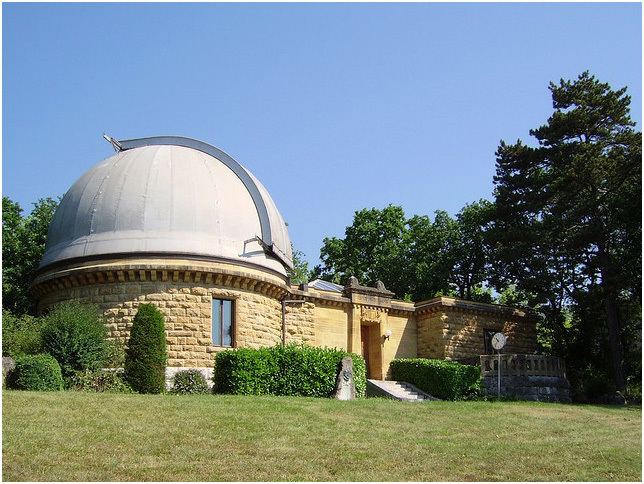Established 1858 Opened 1858 | Website [1] Code 019 | |
 | ||
Similar King's Observatory, Besançon Astronomical Observatory, International Museum of Horology, Zimmerwald Observatory, Bagnoud Observatory | ||
The Observatoire Cantonal de Neuchâtel (Neuchâtel Observatory) is an astronomical observatory funded by the Public Economy Department of the Neuchâtel State (Switzerland) . It is located in Neuchâtel and was founded in 1858. Besides astronomical observations, the Neuchâtel observatory also works with atomic clocks. Before 1967, one second was defined by the rotation of the earth, and thus Neuchâtel observatory calibrated clocks via observations. Now its telescope is used in a historical fashion by local amateur astronomers, while the calibration is done via atomic clocks.
In the past, the Neuchatel Observatory was known as the Observatoire Astronomique et Chronometrique de Neuchatel, in reference to the fact that it participated in assessing and rating Swiss timepiece movements for accuracy. As marine navigation adopted the usage of mechanical timepieces for navigational aid, the accuracy of such timepieces became more critical. From this need developed an accuracy testing regime involving various astronomical observatories. In Europe, the Neuchatel Observatory, Geneva Observatory, Besancon Observatory and Kew Observatory were examples of prominent observatories that tested timepiece movements for accuracy. The testing process lasted for many days, typically 45 days. Each movement was tested in 5 positions and 2 temperatures, in 10 series of 4 or 5 days each. The tolerances for error were much finer than any other standard, including the modern COSC standard. Movements that passed the stringent tests were issued a certification from the observatory called a Bulletin de Marche, signed by the Directeur of the Observatory. The Bulletin de Marche stated the testing criteria, and the actual performance of the movement. A movement with a Bulletin de Marche from an observatory became known as an Observatory Chronometer, and such were issued a chronometer reference number by the Observatory.
The role of the observatories in assessing the accuracy of mechanical timepieces was instrumental in driving the mechanical watchmaking industry toward higher and higher levels of accuracy. As a result, today high quality mechanical watch movements have an extremely high degree of accuracy. However, no mechanical movement could ultimately compare to the accuracy of the quartz movements being developed. Accordingly, such chronometer certification ceased in the late 1960s and early 1970s with the advent of the quartz watch movement.
